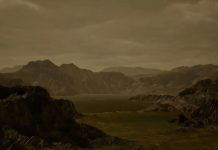
The Hubble Space Telescope has captured a breathtaking view of NGC 2217, a barred spiral galaxy located in the constellation of Canis Major, also known as The Greater Dog.
This galaxy, situated about 65 million light-years away from Earth, is roughly the same size as our Milky Way, spanning about 100,000 light-years across.
NGC 2217 is particularly noted for its central bar, a luminous, star-packed structure that distinguishes it from other types of spiral galaxies.
This bar is not just a striking feature but also plays a crucial role in the galaxy’s evolution.
It acts as a cosmic conveyor belt, funneling gas from the galaxy’s outer disk towards its center.
This process is essential for the formation of new stars and for feeding the supermassive black hole that resides at the galaxy’s heart.
Supermassive black holes, which can weigh anywhere from a few hundred to over a billion times the mass of our sun, are believed to exist in the center of almost all large galaxies, including NGC 2217.
The material drawn into the center by the bar can either add mass to the black hole or become part of new stars.
The spiral arms surrounding the central bar of NGC 2217 are tightly wound and gracefully frame the bright core. These arms are densely populated with stars and contribute to the galaxy’s mesmerizing appearance.
The image of NGC 2217 was enhanced using data from the Panoramic Survey Telescope and Rapid Response System (Pan-STARRS), which added vibrant colorization to the detailed structures observed by the Hubble Telescope.
This combination of advanced telescopic data brings out the rich textures and dynamic environment of NGC 2217, offering a deeper look into the characteristics that define this galaxy.
Studying galaxies like NGC 2217 not only helps astronomers understand the complex mechanics of galaxy formation and evolution but also provides insights into the cosmic phenomena that govern these massive celestial bodies.
The ongoing observations by telescopes such as Hubble play a vital role in expanding our understanding of the universe and our place within it.
Source: NASA.



